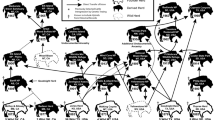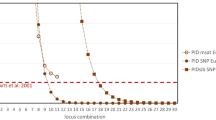Abstract
North American bison have rebounded from near-extinction in the nineteenth century but from such small inbred founding populations that once-rare deleterious nuclear gene alleles and mitochondrial haplotypes are now at high frequencies. The initial bottleneck was compounded by decades of unnatural selection affecting bison conservation genomics and undercutting restoration initiatives. The genomics era began in late 2010 for bison and sister species yak with the release of 102 whole mitochondrial genomes, displacing earlier control region and microsatellite data not extending to coding regions. This allows detection of both sporadic and sub-clade level mutations in mitochondrially encoded proteins and tRNAs by comparative genomics methods: deleterious mutations in both cytochrome b (V98A) and ATP6 (I60N) occur within a single common bison haplotype. Since similar mutations in human and dog cause clinical impairment of mitochondrial oxidative phosphorylation, these bison are predicted to be significantly impaired in aerobic capacity, disrupting highly evolved cold tolerance, winter feeding behaviors, escape from predators and competition for breeding. Because Yellowstone National Park bison are subjected to genetically uninformed culls and surplus animals used to seed new conservation herds, mutational status has significant implications. Continuing take of the remaining bison with wildtype mitochondria may recapitulate errors of nineteenth century bison stewardship bringing bison conservation to the point of no return.
Similar content being viewed by others
Article PDF
Author information
Authors and Affiliations
Corresponding author
Rights and permissions
About this article
Cite this article
Pringle, T. Widespread Mitochondrial Disease in North American Bison. Nat Prec (2011). https://doi.org/10.1038/npre.2011.5645.1
Received:
Accepted:
Published:
DOI: https://doi.org/10.1038/npre.2011.5645.1



